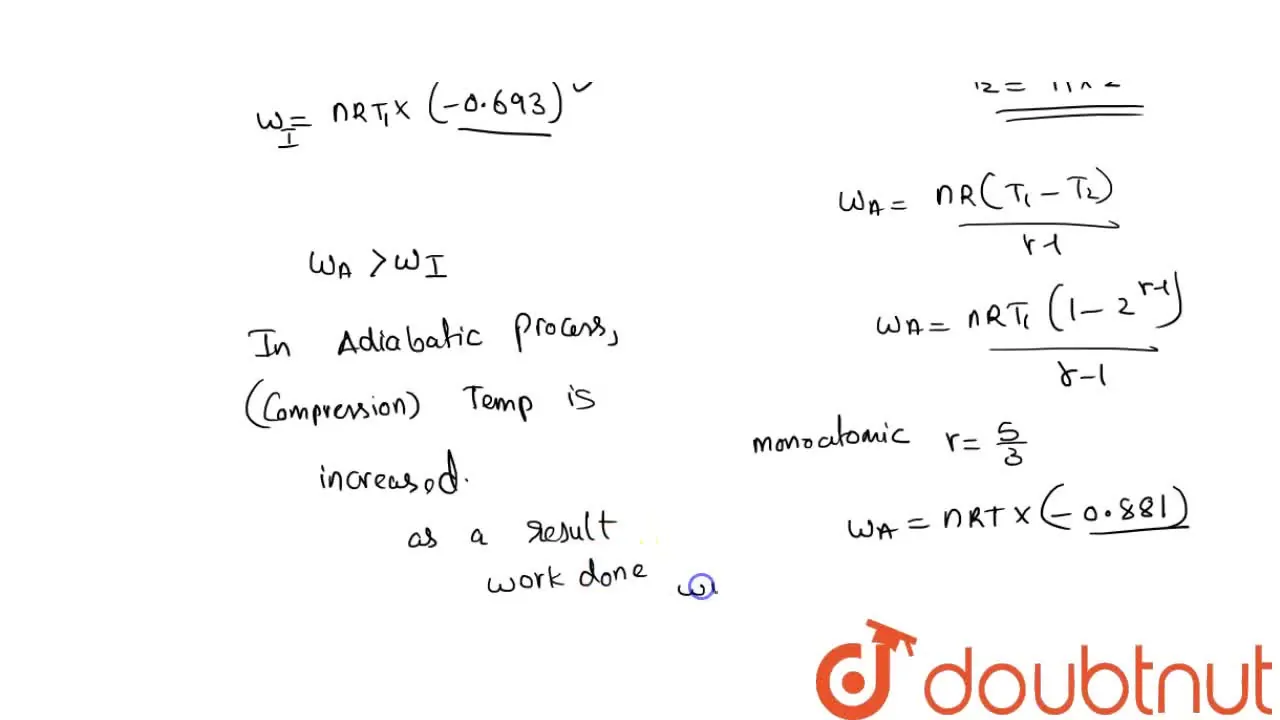An ideal gas is compressed to half of the volume. How much work is done if the process of compression is (a) Isothermal (b) Adiabatic ? In which of the two cases will the work done be more ? How do you account for the difference?Solution in Telugu
(a) In case of isothermal change
So
(b) In case of adiabatic change,
with constant.
i.e., with
so
or
Negative sign means that work is done on the gas.
Comparing Eqns. (1) and (2) we find that for same compression , i.e., more work is required in adiabatic compression than in isothermal.
In adiabatic compression, temperature and hence internal energy of the gas also increases and so more work will be required in comparison to isothermal compression in which temperature and hence internal energy remains constant.
Similar Questions
If a monoatomic ideal gas of volume 1 litre at N.T.P is compressed adiabatically to half of its volume, find the work done on the gas. Also find the work done if the comression is isothermal.
View SolutionAn ideal gas is compressed to half of the volume. How much work is done if the process of compression is (a) Isothermal (b) Adiabatic ? In which of the two cases will the work done by more ? How do you account for the difference ?
View SolutionIf a monoatomic ideal gas of volume 1 litre at N.T.P is compressed adiabatically to half of its volume, find the work done on the gas. Also find the work done if the compression is isothermal. (γ=5/3)
04:45View SolutionIf a monoatomic ideal gas of volume 1 litre at N.T.P. is compressed (i) adiabatically to half of its volume, find the work done on the gas. Also find (ii) the work done if the compression is isothermal. (gamma = 5//3)
View Solutionकिसी आदर्श गैस को कई प्रक्रमों द्वारा इसके प्रारम्भिक आयतन के आधे आयतन तक सम्पीड़ित किया जाता है | किस प्रक्रम में गैस पर अधिकतम कार्य करना होगा ?
05:46View Solutionकिसी आदर्श गैस को गई प्रक्रमों द्वारा इसके प्रारंभिक आयतन के आधे आयतन तक संपीडित किया जाता है। किस प्रक्रम में गैस पर अधिकतम कार्य करना होगा?
05:46View SolutionAn ideal gas is compressed to half of its initial volume by several processes. As a result of which process maximum work is done on the gas?
05:46View Solution


